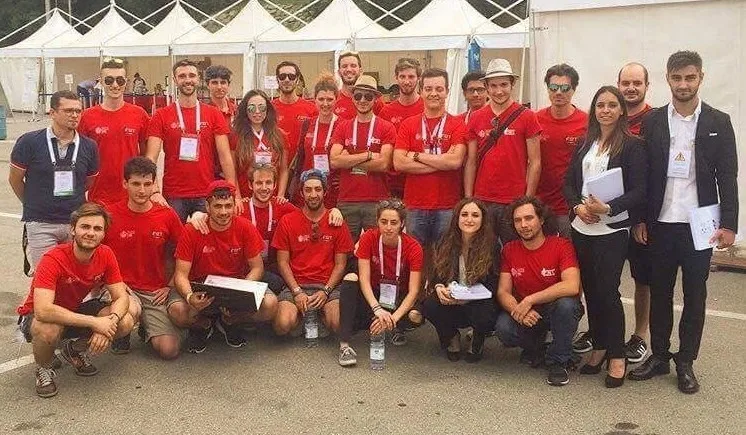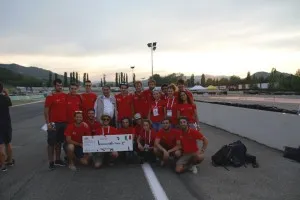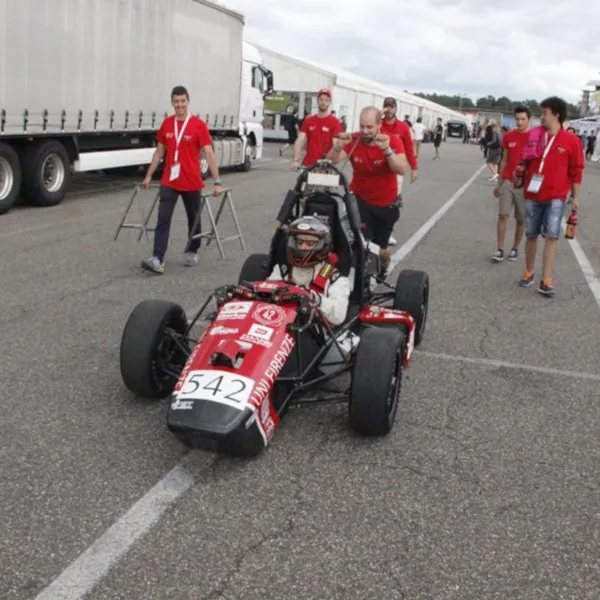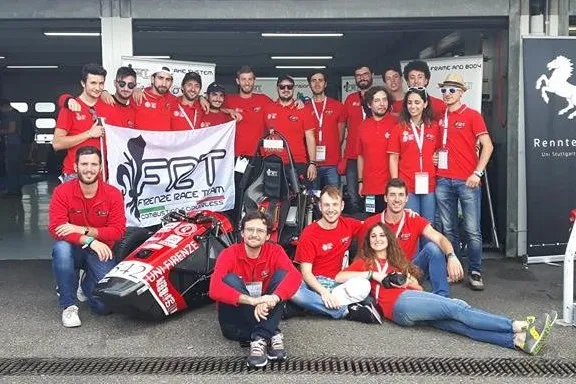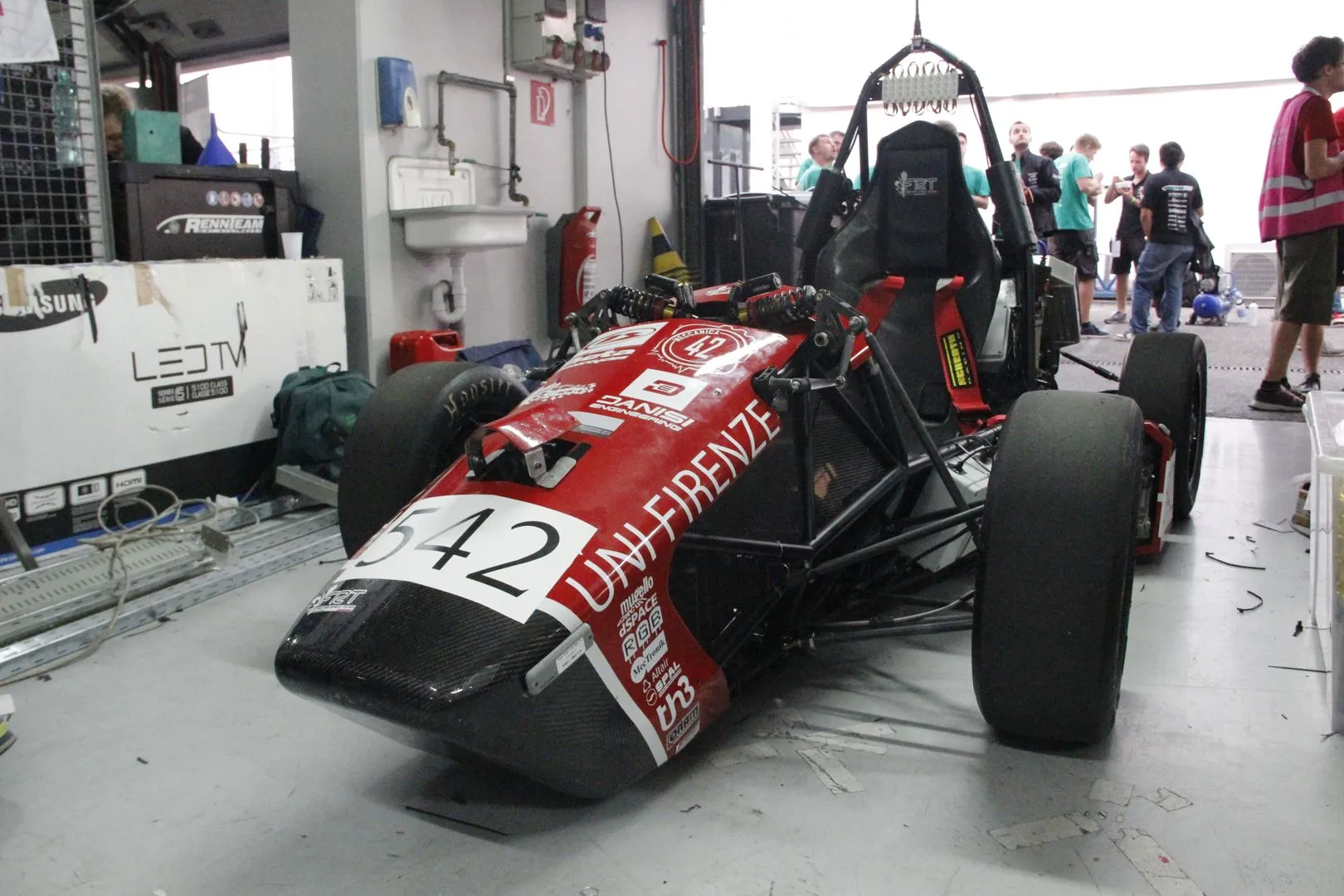FSAE Italy & Germany: a hot summer for FRT
Firenze Race Team had a very demanding year and a “summer on fire”. During 2017 there has been an important generational renewal in the Team. New members have come from different departments of University of Florence and they have brought enthusiasm and new motivations in the Team.
With this deep renewal of the Team, the race department of the University of Florence involved, to realize the projects for the competitions of Formula Student which will be described in the second part of the article, members from the Mechanical, Electronical, Informatic Engineering as well as from Economic Department. The collaboration and coordination managed to go beyond the difficulties of planning and to obtain good results both in the competition and from the individual point of view.
The fiery summer began on July 19th , when some of team members participated at the Formula Student Italy, in Parma, at Varano de’ Melegari circuit and presented their new prototype of the FR-17T. The Team was registered in Class 3 of the competition, where it was requested to show a presentation of the vehicle project and the participation only in Static Events. The students were called to show the judges their vehicle project, that is evaluated both about performances/technology (Design Event) and for the related “realization cost” (Cost Event); finally it should have been expected to prepare a presentation of an industrial and financial plan (Business Presentation).
Firenze Race Team has obtained a very good result of category:
- Design Event: 2° Classified
- Cost Report Event: 1° Classified
- Business Presentation: 7° Classified
The scores obtained allowed the team to be the 2° Overall in Class 3 Category. But summer is not finished for the FRT members. Some of them, just returned from Varano, had immediately finished the details of the other project, presented during the Formula Student Germany event, in Hockenheim from August 7th to 13th. For this year FSG had organized something innovative: the “Driverless” competition category. Our Team presented in first preview the prototype of the FR17-DT, a real vehicle with autonomous driving. Differently from the other teams of the same category, pushed by electrical motors, our autonomous systems has been integrated with an internal combustion engine. The other challengers came from Germany, Swiss, China and Austria.
In order to enter this category, teams from the various universities had to present a single-seater self-driving car and participate in both the static events explained above and the dynamic events specifically designed for the category. The team members had to deal with every aspect of the competition: from the static tests, with the illustration of the mechanical part of the car, the cost analysis and the general idea of the project to a panel of engineers from the world’s leading companies; in the dynamic tests, with regard to acceleration, the Skid-Pad and Track-Drive, where the cars ran on the track in a world premiere. Another static test involved the commercial presentation of the vehicle.
Three team members, students of the University enrolled in the School of Economics, have been busy over the past few months drawing up a business plan for the car and presenting it to a panel of industry experts. Unlike previous competitions, for this year’s FSG regulations had to include a topic that was closer to home: the problems inherent in inter-connectivity between vehicles, spurring teams to find solutions, ideas and contrivances to the problem.
Prior to these tests, the team was busy day and night refining the vehicle and fine-tuning it to pass the Technical Inspections, i.e. the German judges’ strict checks on compliance with the competition regulations. The regulations regulated both mechanical and driverless aspects for these particular vehicles. According to the “Driverless” regulations, it was necessary that, for safety reasons, in addition to those already included, the car also had to be driven by a physical person (by a designated driver from among the team members), so there were mandatory safety measures, both remotely and inside the car.
The days in Germany were long and tiring. Rain and cold weather characterised this great event but did not dampen the morale and tenacity of our youngsters. The innovative FR17-T captured the curiosity of visitors, companies, sponsors and students from other teams, stimulating technical discussions with the latter in particular. The atmosphere at the Formula Student Germany competition, which also featured 150 university teams from all over the world for the ‘Combustion and Electric’ category, was one of mutual cooperation and healthy competition.
Our sincere thanks go to the Departments of Industrial Engineering, Information Engineering and the Faculty of Economics and Management for making these incredible experiences possible.
